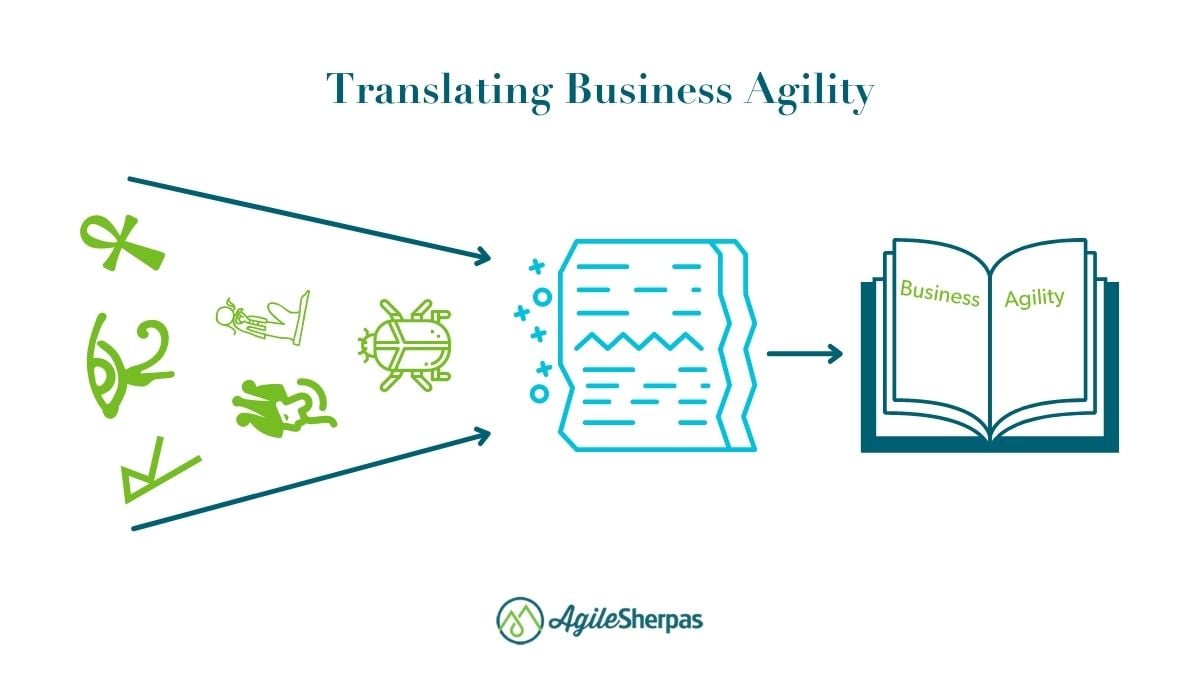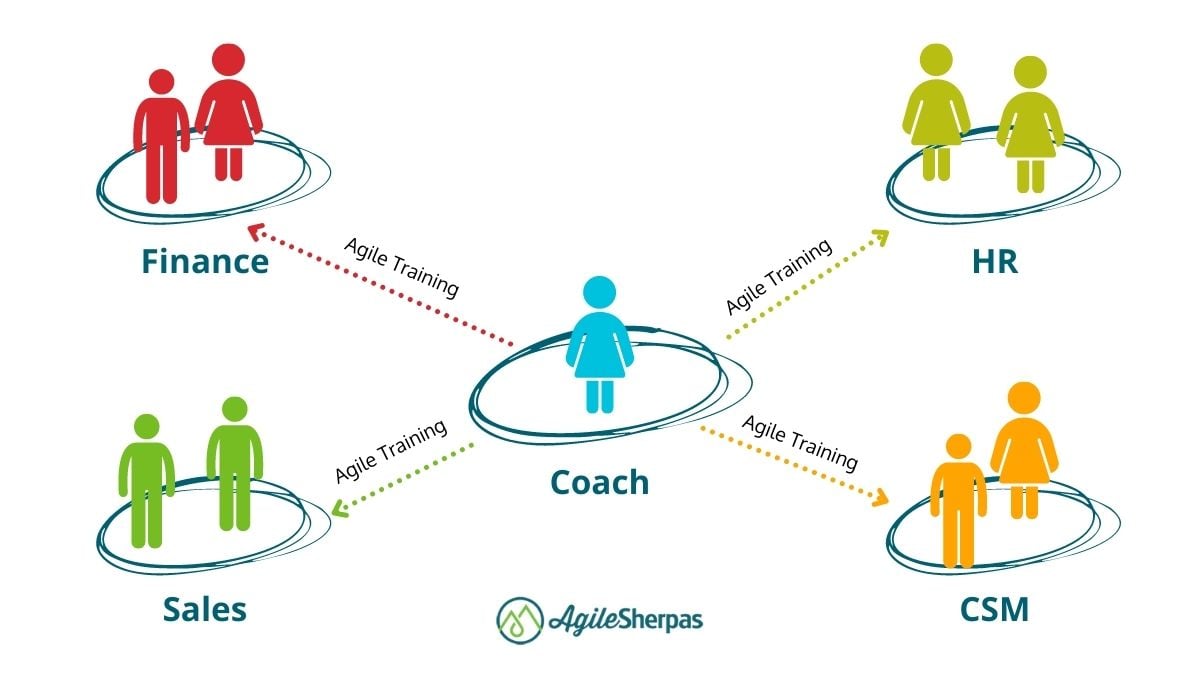Improve your Marketing Ops every week
Subscribe to our blog to get insights sent directly to your inbox.
Confront your process problems head on with a Sherpa by your side.
Explore support options that are tailored to meet you wherever you are on your climb.
Learn from the stories of marketers already on the road to process improvement.
Featured Resource

State of Agile Marketing
Learn from 8 years of study on how marketers are increasing their agility.
Download Report
In the early of days of Agile, it was all about the team.
Agile practices focused on bringing together small groups of developers so they could join forces and deliver value to end users as fast as possible.
But as we discovered how small teams needed to be -- 5 is the widely accepted ideal size -- it quickly became clear that one Agile development team couldn’t single-handedly architect a complex piece of software.
And so Agile ways of working expanded from one team to many, and scaling frameworks came along to help.
The Agile community has been grappling with the scaling challenge for many years now, and as solutions have emerged an interesting thing has begun happening: the bottleneck preventing the rapid delivery of customer value has moved outside of software.
It’s no longer multi-year development cycles or bug-ridden releases that are slowing things down. It’s the inability to communicate the value of what’s being built effectively through marketing, or procurement processes that take months to complete, or waterfall approaches to hiring that keep mission-critical positions empty.
The problem, in other words, is now a lack of agility across the entire business.
Business agility takes the challenges of scaling to a whole new level, which is why it remains an elusive target for most organizations despite its clearly documented benefits.
At AgileSherpas we’ve spent many years now working with marketers to help translate traditional Agile ways of working to their context, and through that work we’ve discovered a kind of Rosetta Stone for business agility.
In other words, figuring out marketing agility can unlock broader business agility. Here’s how.

Let’s build on this Rosetta Stone analogy for a moment. Before its discovery, the ability to read ancient Egyptian hieroglyphics had been lost. People knew it was a language, but they couldn’t decipher it.
Then, in 1799, the Rosetta Stone was uncovered. It contains the text of a decree written in 196 BC, duplicated in Ancient Egyptian hieroglyphs, Demotic scripts, and Ancient Greek. Since people already understood Greek, they could use that knowledge to decipher the hieroglyphics.
Tackling marketing agility has been like unearthing the Rosetta Stone.
Business agility is the hieroglyphics: we know it’s a thing, we know it’s possible, but we don’t speak this language.
Marketing agility is the Ancient Greek copy of the decree. It’s a version of agility we can understand, speak, and use.
When we look at the two side by side, we can unlock a whole new level of understanding that’s eluded us up to this point.
The reason that we need marketing agility to unlock our understanding of business agility is that taking directly Agile from software teams to the entire organization is just too big of a jump. Too many things get lost in translation.
But if we take marketing agility as a stop along the way, an iteration in the process, far less is lost.
Consider the simple example of frameworks.
For the seven years that AgileSherpas has run our State of Agile Marketing Report, we’ve seen marketers reporting a major preference for hybrid frameworks. This year 25% of our Agile marketing respondents reported use of a hybrid; while another 25% say they’re using Scrum.
On the contrary, the 14th annual State of Agile Report, which skews much more heavily to software development and IT, reports that 58% of its respondents use Scrum.
Given that Scrum was developed by software developers looking to solve the very particular problems that their new profession was experiencing, this kind of adoption makes complete sense. And, while Scrum can certainly be applied outside of the context of writing code, there are inevitably some things that don’t fit.
The marketing teams we work with, for instance, must balance many different kinds of work.
Their own strategic priorities, such as growing market share or improving customer retention, share time, resources, and budget with “keep the lights on” marketing activities, requests from internal partners, and unplanned work driven by incoming data, customer feedback, or market forces.
At any given moment, all of these streams may be both urgent and critical, making prioritization painfully difficult.
Swept along by a 24/7 news cycle and customers who expect real-time, relevant messaging, a delay of a day or two can be catastrophic for marketers. Waiting until the end of a sprint to react is often impossible.
And so they build hybrid frameworks, bringing in Kanban, lean, theory of constraints, system thinking, and any other relevant intellectual legacies. This need to blend and customize Agile ways of working is a prime example of how marketing agility unlocks business agility.
For the enterprise to use Agile everywhere, it must be adept at tailoring wisely.
Without marketing to prove this is both feasible and effective, we would remain trapped in the misguided perception that Agile = Scrum, and if it doesn’t work you’re doing it wrong.
There’s no doubt that Agile marketing holds many as yet uncovered insights into how we can get to organization-wide agility. But it already points the way toward many key actions.

First, education is crucial. A lack of training or knowledge about Agile approaches is consistently the most cited barrier to greater agility by marketers.
Very few of us have worked on Agile teams, so we need to understand the mechanics to be effective.
Knowledge workers in finance, HR, sales, etc. will have the same experience.
And it’s not just generic, one-size-fits-all training that’s needed. We hear every week from marketers who’ve been through “off the shelf” workshops and struggled to apply the lessons.
Consider the framework example we talked about earlier. If you’re getting a software-centric perspective, you’re going to hear all about Scrum and how it works.
But outside of development, pure Scrum becomes far less common.
We therefore need nuanced, tailored training that acknowledges and embraces this reality rather than rely on the students to somehow make that major intellectual leap outside of the session. (Spoiler alert: they won’t make the leap. They’ll assume Agile isn’t for them and quit.)
To avoid that problem, find a trainer who’s a subject matter expert with insight from the functional area that’s looking to go Agile. Finance people are trained by someone with a finance background who also knows Agile. Sales hears from a sales professional and agilist. And so on across the org.
If that sounds like a daunting task, or you have no idea where to source such people, give our team a shout and we can curate a learning experience based on who you need to train.
When we ask Agile marketers what’s helped them transition to Agile ways of working and make that change stick, we hear about the use of Agile project management tools in both cases.
Especially in the hybrid future of work we’re all marching toward, strong digital tools will be crucial to achieving the transparency and visual work management on which agility relies. As more teams in more diverse parts of the business go Agile, we’ll also need the ability for executives to track inter-related activities across functions.
All of this cries out for consistent tooling.
But tools are not a panacea for all your process problems, nor can you copy and paste what’s working in software and assume it’s going to be fine for everyone else.
Many vendors see this writing (or should I say hieroglyphics) on the wall and are working to create solutions that can plug in across the business. Seek them out and work with your account rep to build the right tool set.
Just as you shouldn’t force non-developers to rigidly follow Scrum without considering the nuances of their work, you shouldn’t force them to adopt the same set of tools without considering their own tech stacks and work styles.
While 100% adoption of Agile ways of working across the business is the ultimate goal, I always caution executives against imposing agility where it’s not wanted.
Marketing has become exponentially more digital over the last 10-15 years, which has attracted different personality types, improved its ability to deliver iteratively, and created opportunities for test and learn cycles that simply didn’t exist before.
In other words, the marketing function was ready for agility.
Oftentimes a shift in the marketing teams acts as a catalyst for other functions to make a similar shift. Some of our clients have begun to budget differently to fund their newly Agile teams, and this creates opportunities to change how finance and/or procurement work.
Other marketing teams have started to embed legal representatives on their Agile teams to avoid late-stage bottlenecks. Those legal team members then take Agile concepts back to their own part of the business.
Still others run sprints in parallel with their sales colleagues, providing feedback loops to one another and feeding off the data other teams collect.
In all these examples, the organizations are best served when they’re opportunistic. They follow where the flow of agility naturally leads, rather than insist that everyone be Agile ASAP.
If you’re looking for a way to get Agile outside its original home in software and into the rest of the organization, consider your marketers as the Rosetta Stone you need to translate agility.
Build an understanding of marketing agility in your organization, and then apply your learnings (and the momentum they create) to spread Agile far and wide.
If Agile seems like Greek to you, Agile marketing may be the key you need to decipher it.

Andrea Fryrear is a co-founder of AgileSherpas and oversees training, coaching, and consulting efforts for enterprise Agile marketing transformations.
Subscribe to our blog to get insights sent directly to your inbox.
Subscribe to our blog to get insights sent directly to your inbox.